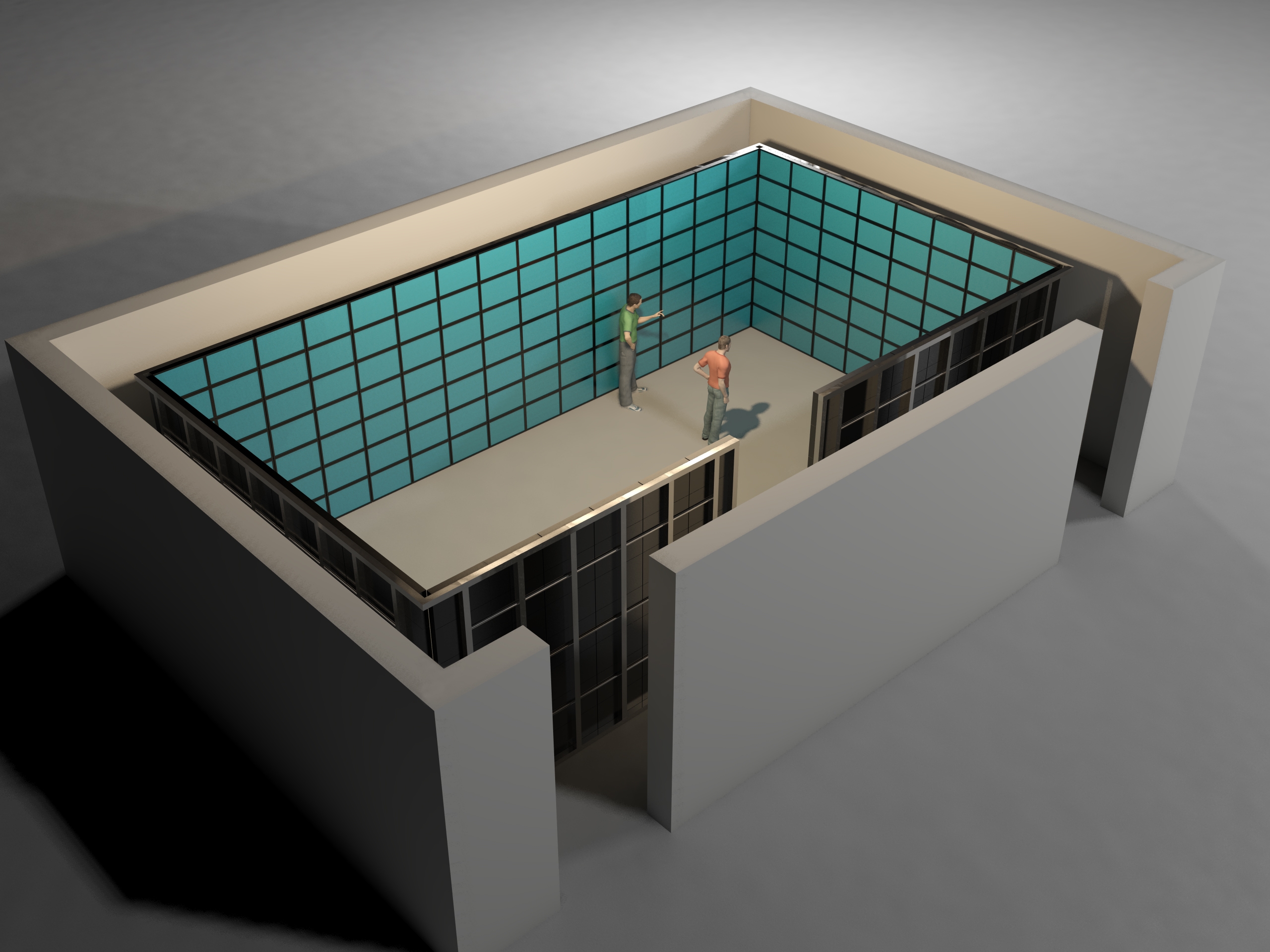School to build world's highest-res 'holodeck' facility

Research institutions throughout the world are upping the ante on immersive visualization facilities for data exploration and manipulation.
With the help of a $1.4 million grant from the National Science Foundation, Stony Brook University will build what they call a "Reality Deck" capable of providing visitors with 1.25 billion pixels of information, approaching the visual acuity of the human eye, according to researchers.
When completed, it would be the highest resolution facility in the world, dethroning CAVE, a 100 million-pixel lab at KAUST.
Reality Deck will be housed in a 40' x 30' x 11' high room containing 308 LCD display screens driven by an 85-node graphics computing cluster that rivals the performance of modern supercomputers.
Arie E. Kaufman, Ph.D., a distinguished professor and chair of the Computer Science Department at Stony Brook, expects the Realty Deck facility to be constructed in about a year.
Here's how Dr. Kaufman describes the data visualization facility: "Unique tiled display environment with more than a billion pixels that can provide a life-like, realistic immersion into the data to be explored and reasoned with. This revolutionary facility is a one-of-a-kind exploration theater. It is an engineering feat – a unique assembly of hundreds of LCD displays, graphics cluster, sensors, communication, computer vision and human-computer interaction technologies to deliver a holistic system with a significant societal and research and development value."
Reality Deck will be put to use in a variety of projects including advanced medical imaging, satellite imaging, nano-electronics, climate modeling, micro tomography, survey telescopes for astronomical applications, detecting suspicious persons in a crowd, news and blog analyses. "Any application that involves a tremendous amount of data," Dr Kaufman said. These days, that covers about anything.
Update: July 16, 5:45 PM PDT - Stephen B. Gilbert, Ph.D., an associate director at Iowa State University's Virtual Reality Applications Center, reached out to set the record straight. Apparently, Iowa State opened the first 100 million pixel facility called C6 in 2000.
Related reading:
